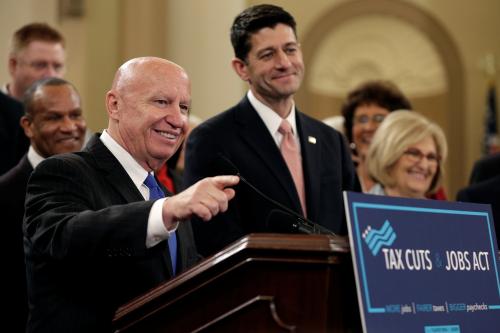This op-ed originally appeared in the Wall Street Journal on April 9, 2019.
Less than half as many American taxpayers are claiming the mortgage-interest deduction for 2018 as did the year earlier. With any luck, the 2017 tax overhaul will prove to be only the first step toward eventually replacing the century-old housing subsidy with a more effective program.
Taxpayers claim the greater of the standard deduction or the sum of various itemized deductions, including mortgage interest. The Tax Cuts and Jobs Act of 2017 raised the standard deduction, capped deductible state and local taxes at $10,000, and reduced the maximum mortgage principal eligible for deductible interest to $750,000 (from $1 million) for new loans. As a result, according to Tax Policy Center estimates, the number of taxpayers who take the mortgage-interest deduction will fall from 34 million (20% of returns) in tax year 2017 to 14 million (8% of returns) in 2018.
This is a welcome change. The mortgage-interest deduction has existed since the income tax was created in 1913, but it has never been easy to justify. Under classical economic theory, interest payments on an investment should be deductible, so that only profits—the income left over after expenses have been paid—are taxed. But the economic “income” from occupying a house—imputed rent—isn’t taxed in the first place, so there’s no reason the cost of earning that income should be deductible.
The massive growth in the income tax during World War II led to a narrative that the mortgage-interest deduction encouraged homeownership. But study after study belies this claim. Canada, the United Kingdom, and Australia have no mortgage-debt subsidies, yet their homeownership rates are slightly higher than in the U.S. A large reduction in the mortgage-interest deduction in Denmark in 1987 had virtually no effect on homeownership rates.
Instead, the deduction encourages construction of larger, more expensive houses. This leads to higher energy costs and urban sprawl and reduces investment funds available for business. The resulting higher home prices may actually raise costs for first-time purchasers, most of whom don’t itemize or are in the 12% tax bracket and thus gain little or no direct benefit from the deduction anyway. By encouraging people to finance homes with high levels of debt, the deduction increased the likelihood of default when housing prices fell in the financial crisis.
Notably, despite the steep decline in eligibility for the deduction over the past year, housing markets seem to be doing fine, especially in high-cost, high-tax states that might have been thought to be most affected.
The deduction has always been regressive, and the 2017 tax changes made it more so. In 2018 almost 17% of the benefits will go to the top 1% of households, and 80% of the benefits will go to households in the top 20% of the income distribution. Only 4% will accrue to households in the middle income quintile.
The deduction has always been regressive, and the 2017 tax changes made it more so.
While the economics of the deduction have always been suspect, the 2017 tax law changed the politics of the subsidy, too. By cutting the use of the deduction and further concentrating the benefits onto high-income households, the tax overhaul makes clear that current mortgage subsidies aren’t meant to help the middle-class or new homeowners.
The next step should be to eliminate the deduction altogether. The phaseout should be gradual but complete. One approach would be to reduce the maximum principal against which interest can be deducted by $75,000 a year—10% of the current limit—for the next 10 years.
The mortgage-interest deduction has been expensive, reducing federal revenues by about $60 billion a year before the tax overhaul. That figure is now down to around $30 billion.
Axing the deduction would provide more than enough resources to give each first-time home buyer a one-time refundable tax credit of $10,000. That would be more progressive and less expensive than current policy and, most important, would actually help some middle-class families become homeowners.
The Brookings Institution is committed to quality, independence, and impact.
We are supported by a diverse array of funders. In line with our values and policies, each Brookings publication represents the sole views of its author(s).






Commentary
Op-edChipping away at the mortgage deduction
May 13, 2019